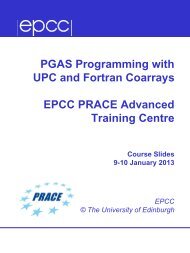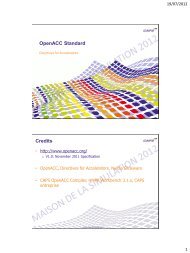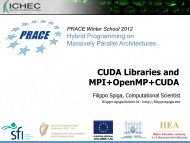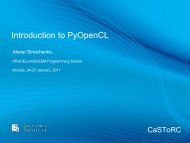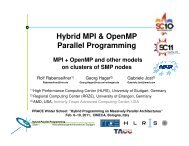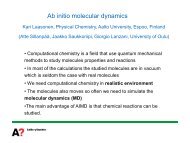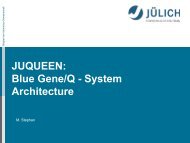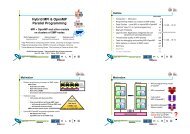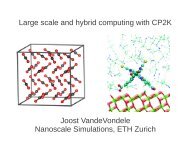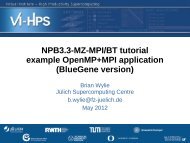LPG 1LPLPG 2LPwhere we first de-couple the ligand from the solvent, and then re-solvate the ligand inthe presence of the protein. The free energy of binding is thusG binding = G 1 + G 2 ,and the simulation is split into two parts: one calculating the de-solvation free energy,and one involving the free energy of coupling of a molecule into the system <strong>with</strong> aprotein. That last simulation couples the ligand from ! =0 where it doesn’t interact <strong>with</strong>the system, to the situation at !=1, where the protein is bound to the ligand. The firstsimulation is the inverse of a free energy of solvation. This is the one we’ll concentrateon in this tutorial - partly for computational performance reasons: because there is noprotein involved, the simulation box size can be small and the simulations will be fast.Free energy of solvationTo calculate a free energy of solvation, we calculate -!G 1 in the picture above, or,equivalently, !G solv in this picture:LG solvL
We’ll do this coupling our molecule to a variable ! (see Eq. 1) and Bennett AcceptanceRatio (BAR) calculations, as built into <strong>Gromacs</strong> 4.6.The BAR method relies on the output of pairs of simulations, say at state ! A and ! B .The free energy difference can be calculated directly if ! A and ! B are close enough (seeBennett’s original article: Bennett, J. Comp. Phys, (1976) vol. 22 p. 245 for details), bycalculating the Monte Carlo acceptance rates of transitions from ! A to ! B and vice versa,mapping states from ! A to ! B . The term ‘close enough’ here means that switchingbetween the two states should be possible in both directions: some of the sameconfigurations should be allowed in both end points (i.e. they should share some partsof phase space).The most obvious points for ! A and ! B would be ! A =0 and ! B =1. These end points,however, usually have very few states in common: they share very little phase space.Because of this, the free energy would never converge to a usable value. That’s whywe’ll split up the problem:G L G L G L!=0 !=0.4!=0.6!=1<strong>with</strong> as many ! points as are needed. We will therefore effectively ‘slowly’ turn on (oroff) the interactions between our ligand and the solvent. This means that we need to runas many simulations as there are ! points, that we need to tell each simulation whichneighboring ! points there are, and that we will post-process the results combining theresults of many simulations (we will use 7 ! points: 0, 0.2, 0.4, 0.6, 0.8, 0.9 and 1). As anexample, we will run one simulation at !=0.4, and that simulation will calculate theenergy differences between its ! point and the neighboring points !=0.2 and !=0.6.We will take one shortcut: we will turn off both the electrostatic (Coulomb)interactions and the Van der Waals (Lennard-Jones) interactions at the same time. Forhigh-quality results, these stages are normally separated, but here we will do them bothat the same time for expediency. <strong>Gromacs</strong> uses ‘soft-core’ interactions to make sure thatwhile the normal (Lennard-Jones and Coulomb) interactions are being turned off, therewill never be two point charges sitting on top of each other: this is achieved by turningon an interaction that effectively repels particles at intermediate ! points (in such a waythat it cancels out from the free energy difference).



